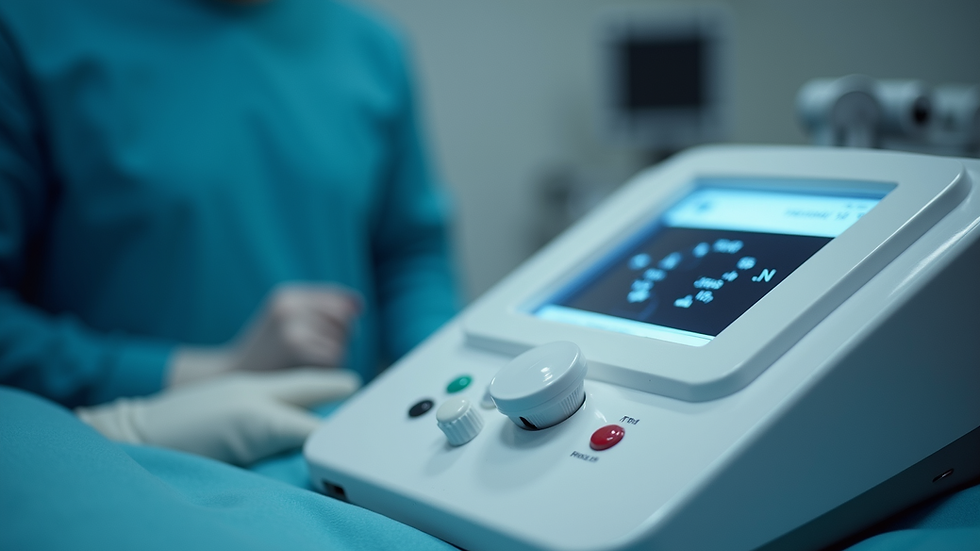Understanding Non-Bacterial Prostatitis Causes
- Fabio Castiglione

- 12 minutes ago
- 3 min read
Prostatitis is a common condition affecting many men worldwide. It involves inflammation of the prostate gland, which can lead to discomfort and urinary issues. Understanding the causes of prostatitis is essential for effective treatment and management. This article explores the various causes of prostatitis, focusing on the different types, symptoms, and what triggers this condition.
Exploring the Causes of Prostatitis
Prostatitis can be caused by several factors, and it is generally classified into four main types: acute bacterial prostatitis, chronic bacterial prostatitis, chronic prostatitis/chronic pelvic pain syndrome (CP/CPPS), and asymptomatic inflammatory prostatitis. Each type has distinct causes and characteristics.
Acute bacterial prostatitis is caused by a bacterial infection, often from common urinary tract bacteria such as Escherichia coli. This type develops suddenly and requires immediate medical attention.
Chronic bacterial prostatitis results from a persistent bacterial infection that may be difficult to eradicate.
Chronic prostatitis/chronic pelvic pain syndrome (CP/CPPS) is the most common form and is not caused by bacteria. The exact causes are unclear but may involve inflammation, nerve damage, or autoimmune responses.
Asymptomatic inflammatory prostatitis is detected incidentally during examinations for other conditions and usually does not cause symptoms.
Understanding these causes helps in diagnosing and tailoring treatment plans effectively.

Common Causes of Prostatitis
Several factors contribute to the development of prostatitis. These include infections, lifestyle factors, and other medical conditions. Here are some common causes:
Bacterial Infections
Bacteria entering the prostate through the urethra or bloodstream can cause infection. Urinary tract infections (UTIs) are a frequent source.
Urinary Tract Issues
Blockages or abnormalities in the urinary tract can lead to inflammation and prostatitis.
Immune System Response
Sometimes, the immune system may mistakenly attack prostate tissue, causing inflammation without infection.
Nerve Damage
Injury or irritation to nerves in the pelvic area can contribute to chronic prostatitis symptoms.
Stress and Lifestyle
Stress, poor diet, and lack of exercise may exacerbate symptoms or contribute to inflammation.
Other Medical Conditions
Conditions such as pelvic floor muscle dysfunction or sexually transmitted infections can also play a role.
For those seeking more detailed information on non-bacterial prostatitis causes, this resource provides in-depth insights and treatment options.

Does Prostatitis Cause Bleeding?
One common concern among men with prostatitis is whether the condition can cause bleeding. The answer depends on the type and severity of prostatitis.
Blood in Urine or Semen: Some men with prostatitis may notice blood in their urine (hematuria) or semen (hematospermia). This can occur due to inflammation or infection causing irritation and damage to blood vessels in the prostate.
Rectal Bleeding: This is less common and usually indicates other underlying issues, such as hemorrhoids or gastrointestinal problems, rather than prostatitis itself.
When to Seek Medical Help: Any bleeding should be evaluated by a healthcare professional to rule out serious conditions like prostate cancer or urinary tract injury.
Managing prostatitis effectively can reduce the risk of bleeding and other complications. Treatment may include antibiotics, anti-inflammatory medications, or lifestyle changes.

Diagnosing and Managing Prostatitis
Accurate diagnosis is crucial for effective management of prostatitis. Doctors use a combination of medical history, physical examination, and diagnostic tests such as:
Digital Rectal Exam (DRE): To check the prostate size and tenderness.
Urine Tests: To detect bacterial infections.
Prostate Fluid Analysis: To identify inflammation or infection.
Imaging Tests: Ultrasound or MRI may be used in complex cases.
Treatment depends on the type of prostatitis:
Antibiotics for bacterial prostatitis.
Alpha-blockers to relax muscle fibers in the prostate and bladder neck.
Anti-inflammatory medications to reduce pain and swelling.
Physical therapy for pelvic floor muscle dysfunction.
Lifestyle modifications such as stress reduction, diet changes, and regular exercise.
Early diagnosis and tailored treatment improve outcomes and quality of life.
Lifestyle Tips to Support Prostate Health
In addition to medical treatment, certain lifestyle changes can help manage prostatitis symptoms and support overall prostate health:
Stay Hydrated: Drinking plenty of water helps flush bacteria from the urinary tract.
Avoid Irritants: Limit caffeine, alcohol, and spicy foods that can irritate the bladder.
Practice Good Hygiene: Prevent infections by maintaining genital hygiene.
Regular Exercise: Helps reduce stress and improve pelvic muscle strength.
Manage Stress: Techniques such as meditation, yoga, or counselling can be beneficial.
Avoid Prolonged Sitting: Take breaks to reduce pressure on the prostate area.
Implementing these tips can complement medical treatment and reduce the frequency of prostatitis flare-ups.
Understanding the causes of prostatitis is the first step toward effective management. Whether bacterial or non-bacterial, identifying the root cause allows for targeted treatment and improved quality of life. If you experience symptoms such as pelvic pain, urinary difficulties, or bleeding, consult a healthcare professional promptly for evaluation and care.







Comments